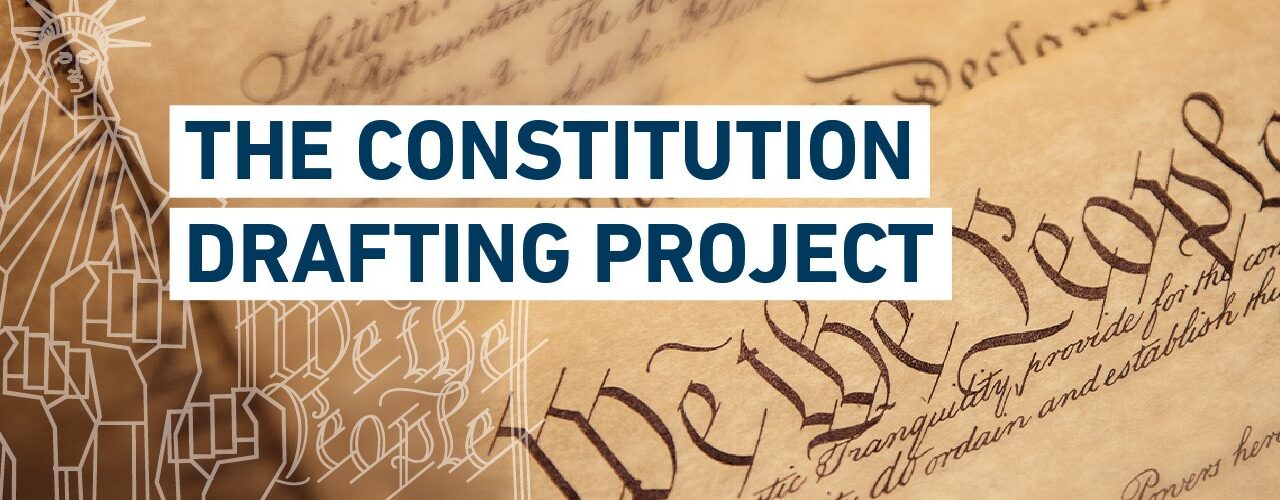Nicole DeOrzio ’24, Staff Writer
On September 19, 2022, the National Constitution Center hosted an hour-long Town Hall where libertarian Ilya Shapiro, progressive Caroline Fredrickson, and conservative Ilan Wurman came together to present and explain five constitutional amendments that their three respective ideological teams agreed upon. The forum was the product of this past summer’s “virtual constitutional convention,” where each team drafted their ideal constitution. With these frameworks in place, the teams engaged in debate before deciding on suitable compromises. The following five amendments emerged from this collaborative effort.
First, the group’s 28th Amendment removes the natural born citizenship requirement from the criteria for presidential eligibility. With this amendment, a president would simply need to be at least 35 years of age and a United States citizen with residential status for 14 years. All teams agreed that the natural born citizen requirement is a relic of the past.
Under their proposed 29th Amendment, Congress is granted the power to enact legislative vetoes through majority votes in both the House of Representatives and the Senate, except in cases that involve the applicability of statutes to individuals. This would place an additional check on the executive department, but it would not compel Congress to review all executive actions. Instead, Congress would have the discretion to veto as the body feels such action is necessary. This amendment quells the concerns that many people across the ideological spectrum have raised about unilateral executive action. It helps ensure that Congress remains the legislative body, as the Framers of the Constitution intended.
Next, the group agreed that the impeachment process should be reimagined. Under the 30th Amendment, it would be harder for the House of Representatives to impeach and easier for the Senate to convict. Currently, a majority vote in the House is needed to pass articles of impeachment, and a two-thirds vote is needed in the Senate to convict. This amendment would raise the threshold in the House to three-fifths and lower the standard to convict in the Senate to three-fifths. In addition, the standard of impeachment is clarified. Violations worthy of impeachment must reach the level of “serious criminal acts or serious abuse of the public trust” rather than “high crimes and misdemeanors.” This new standard considers the inherent political nature of impeachments, and the wording was meticulously debated among the teams.
Through the 31st Amendment, the group modified the appointment process. First, the amendment would make it easier to ratify treaties by lowering the vote needed in the Senate from two-thirds to three-fifths. Second, the amendment would restructure the Supreme Court by fixing the number of justices at nine and implementing 18-year staggered term limits. With this structure, every presidential term would see two Supreme Court appointments. To begin this process, the justice who has served the most time on the Court would retire by the next presidential inauguration. This process would continue with the next senior-most justice until all current justices have retired. In addition, the group came to the consensus that such a system would reduce the temperature of Senate confirmations battles. If the Senate does not vote on the nominee within three months, then the confirmation is automatic. However, the Senate can choose to decline nominees as many times as they would like. If a party wishes to engage in this stonewalling, they will face the political consequences of such actions.
Finally, the 32nd Amendment would make it easier to amend the Constitution. Currently, a two-thirds vote in both the House and Senate are needed to propose an amendment and three-fourths of state legislatures must vote to ratify it. With this new amendment, a three-fifths vote would be needed in the House and Senate to propose an amendment, and two-thirds of the state legislatures must vote to ratify it. In addition, this amendment would provide mechanisms by which the population is considered. States representing two-thirds of the population could propose amendments to the Constitution, and states representing three-fourths of the population could ratify a proposed amendment. This would help ensure that a small setback would not derail the adoption of a broadly supported amendment.
Through this project, the National Constitution Center facilitated the creation of feasible amendments. Even more striking, though, is the amount of common ground between each ideological team. Beyond the political spectacle, collaboration and agreement is possible. With this attitude, the United States can adopt policies that best serve the American people.
For more information on the Constitution Drafting Project, please click here.





